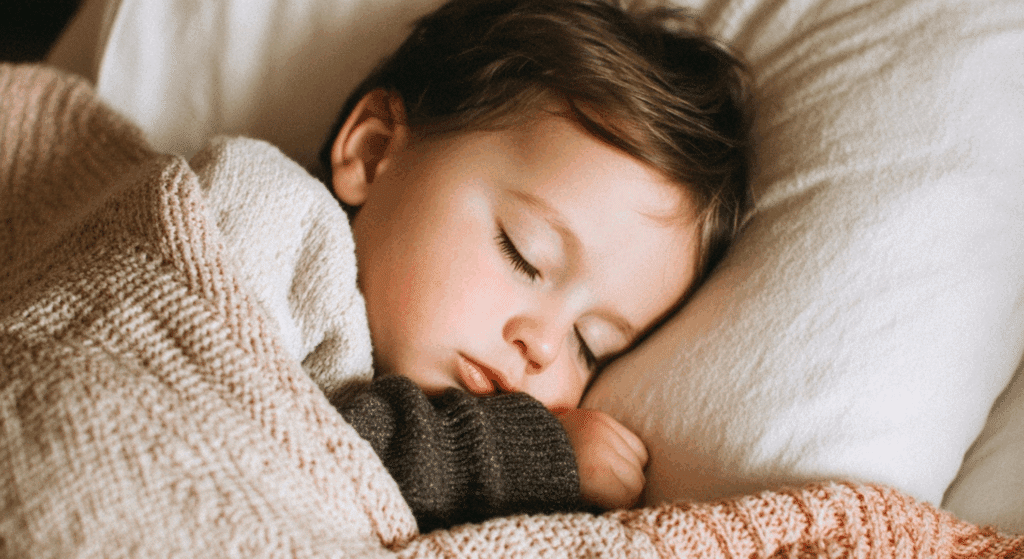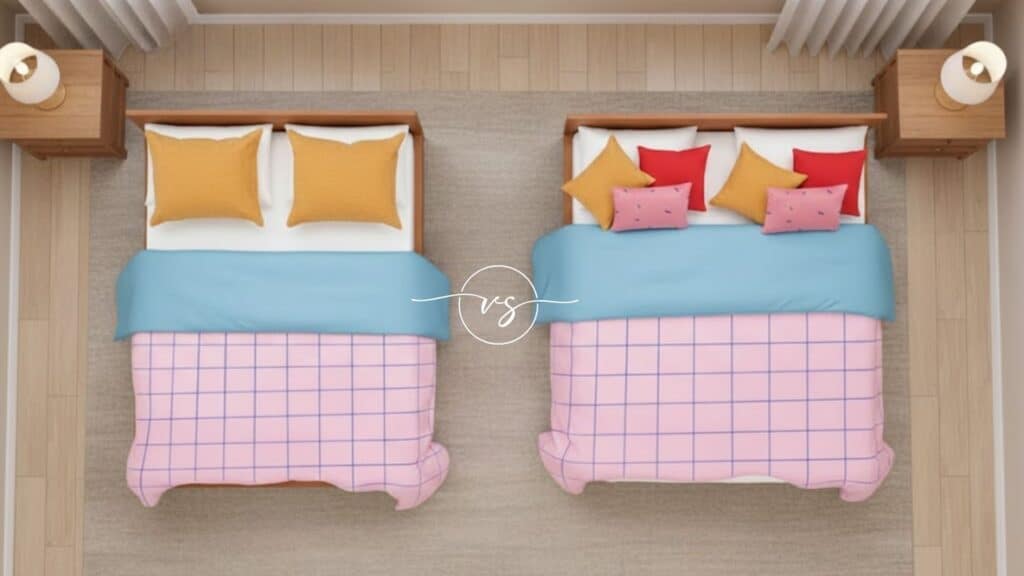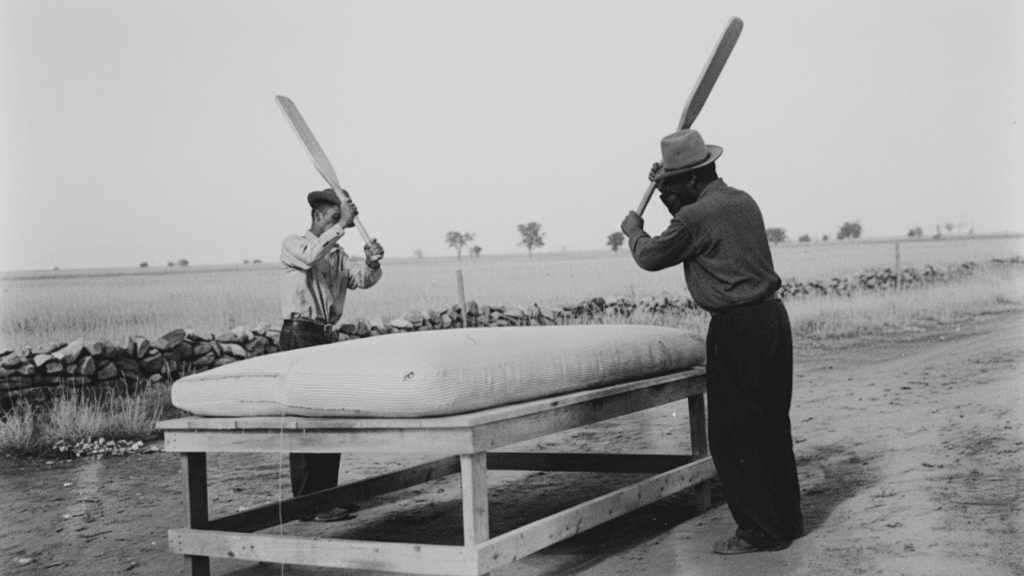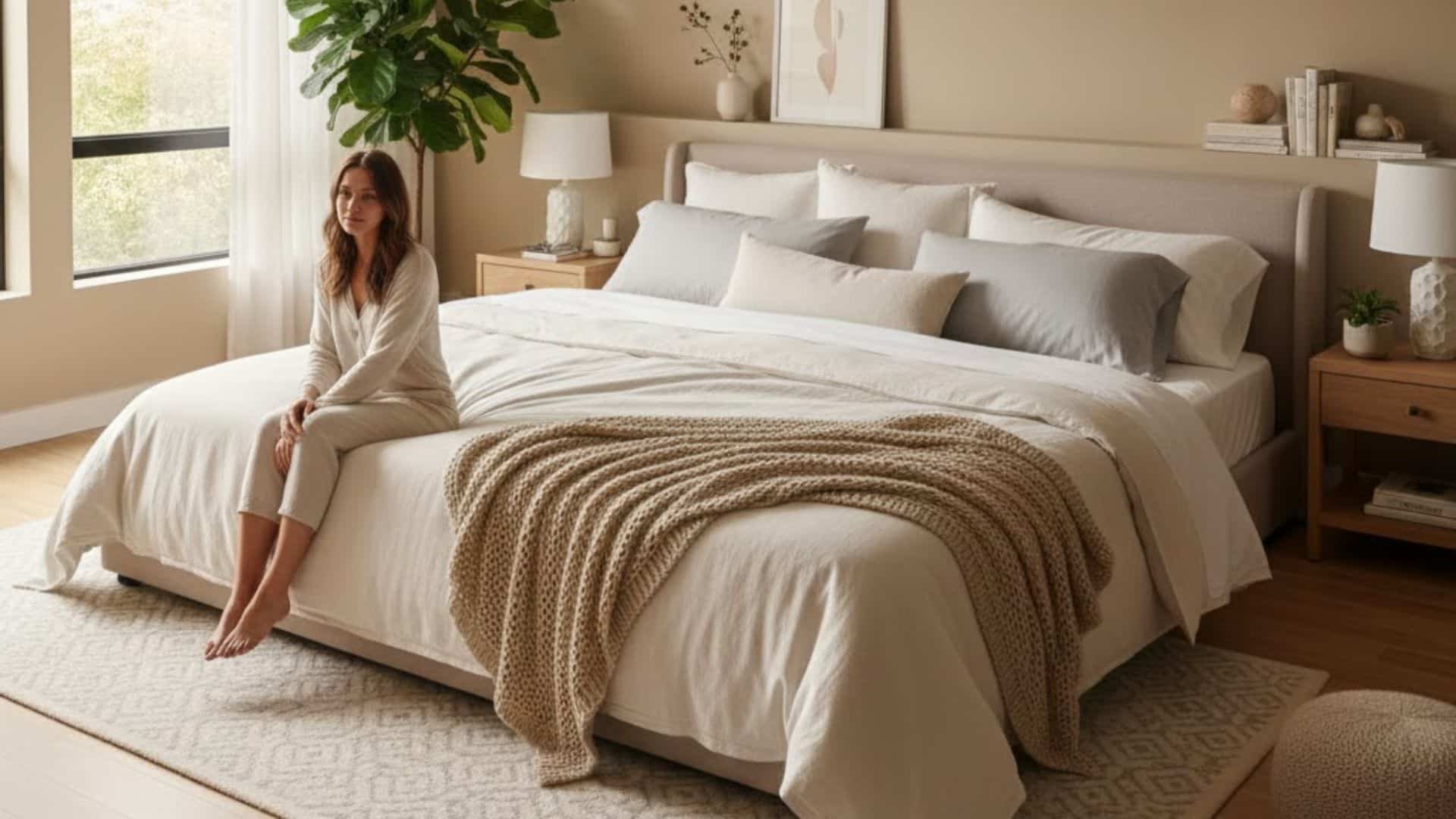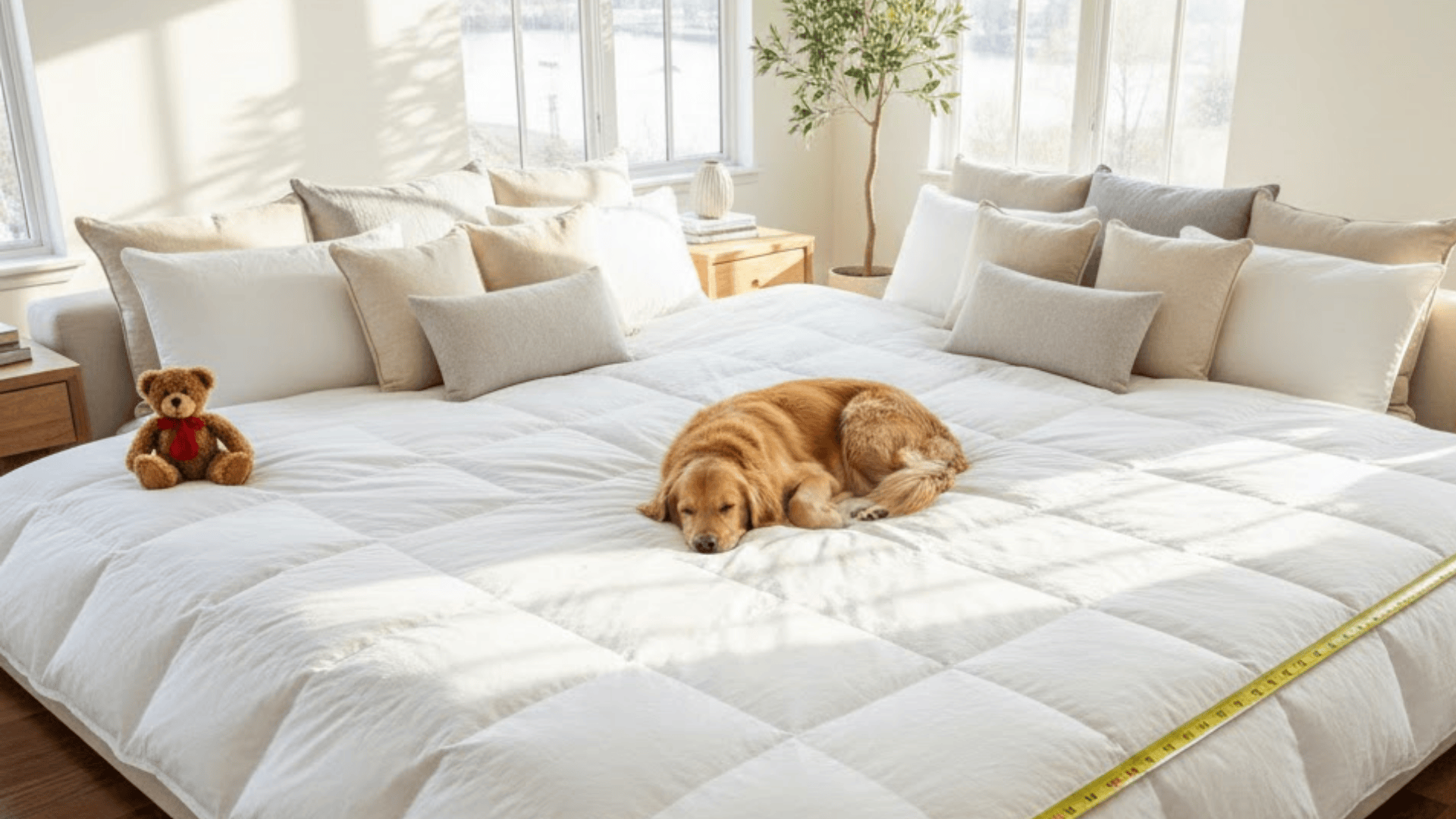I’ve noticed that one of the most common questions parents ask is when can babies sleep with a blanket. It’s not just about comfort; it’s about safety, timing, and knowing what your baby is ready for.
This question doesn’t always come with a clear answer, and that’s what makes it tricky. The advice out there can feel mixed or vague, especially when your baby is in between stages.
If you’re feeling unsure, this guide is here to help. You’ll learn the safe age to introduce a blanket, signs your baby might be ready, and how to do it safely. You’ll also find tips from parents, expert advice, and a simple plan so you can make this decision with more clarity and confidence.
Why Parents Worry About Blankets and Baby Sleep
When it comes to baby sleep, many parents worry. Some of the biggest fears are suffocation, Sudden Infant Death Syndrome (SIDS), and overheating. These are serious concerns.
Babies can’t move blankets away from their faces, and they can’t cool themselves down like older kids. That’s why parents are extra careful with what goes in the crib. Even something that seems soft and harmless, like a blanket, can feel risky.
Another thing that adds to the confusion? Different websites and experts say different things.
Some say you can use a blanket after 12 months, others say 18 months, and a few say wait until 2 years old. That makes it hard to feel sure about what’s right.
If you’ve found yourself second-guessing when to make the switch, you’re not alone. Most parents go through this. It’s normal to want to do everything right, especially when it comes to your baby’s safety.
What Experts Say About Baby Blankets
Many parents wonder when baby blankets are safe to use. According to the American Academy of Pediatrics (AAP), loose blankets should not be used in a crib until a baby is at least 12 months old. In some cases, experts say it’s better to wait until 18 months, especially if your baby moves around a lot during sleep.
The reason is simple: loose bedding can be dangerous for babies. Blankets, pillows, or stuffed toys in the crib raise the risk of suffocation. A baby may not be able to move a blanket off their face if it covers their nose or mouth.
Blankets also carry a risk of getting wrapped around the baby’s neck or body. This can stop breathing or cause overheating, which is also linked to SIDS (Sudden Infant Death Syndrome).
That’s why the AAP recommends using sleep sacks or wearable blankets instead. These keep your baby warm without extra fabric in the crib.
When Can Babies Sleep With a Blanket & What Parents Can Do?
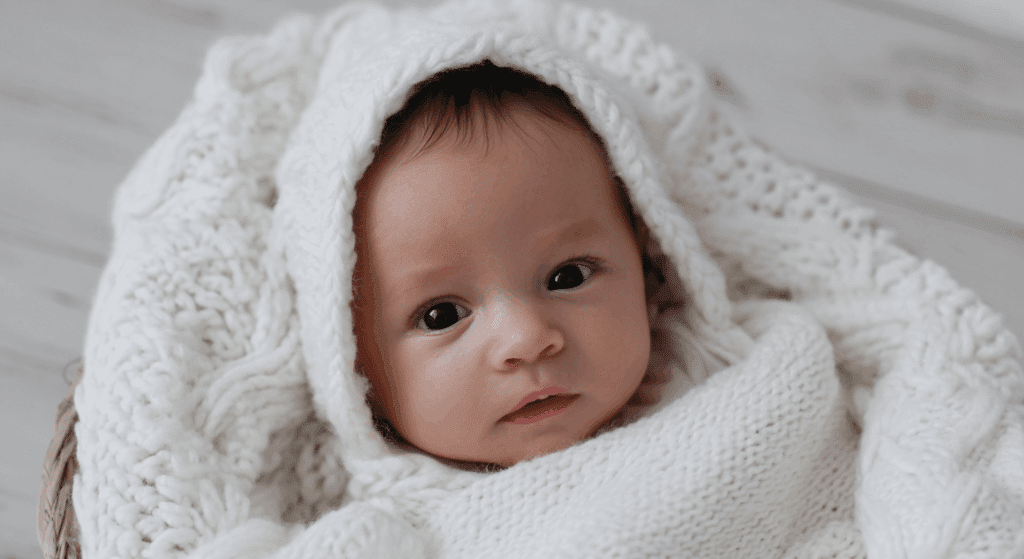
If you’ve typed “when can baby sleep with blanket” into Google, you’ve probably found a lot of different answers. That’s because real-life parents make this decision at different times, based on what feels right for their baby. On Reddit, some parents in the Parenting thread said they gave their baby a light blanket as early as 9 or 10 months.
One parent shared that their daughter could roll over and move things off her face, so they felt it was okay. Others in the same thread waited until around 14 to 18 months, especially if their baby moved around a lot in their sleep or liked to cover their face.
Another post in toddlers shows a mix of comfort levels. Some parents switched from sleep sacks to blankets around the one-year mark, while others were more cautious and held off until later. They often looked at how well their child could roll, sit up, or push things off.
On Facebook, many of the same kinds of stories come up. In the “Baby Blanket, Baby Products, Parent Guides to Baby” group, parents talked about waiting until their babies were at least a year old.
A few mentioned that their babies slept better once they had a soft, breathable blanket, while others stuck with sleep sacks for peace of mind. In larger groups like Parenting People and Village Parenting, you’ll also find a wide mix of approaches, showing that there’s no one-size-fits-all answer.
What stands out most in all these posts is that parents tend to trust both their instincts and their child’s development. Some feel okay making the switch earlier, while others wait until they see clear signs their baby is ready.
Signs Your Baby Might Be Ready for a Blanket
Every baby grows at their own pace, so there’s no one exact age when it’s safe to add a blanket. But there are some clear signs that can help you decide if your baby might be ready. The most important thing to look for is movement.
If your baby can roll over in both directions, sit up without help, and push things away from their face, that shows they have better control over their body while sleeping.
Babies who are still swaddled or can’t move freely aren’t ready for loose bedding. Swaddling keeps them from using their arms, so it’s not safe to add anything loose in the crib during that stage.
Also, if your baby has stopped using a swaddle and sleeps well in a sleep sack or without it, that’s a strong sign they’re getting closer to blanket-readiness. Still, always watch your baby’s sleep habits and talk to your doctor if you’re unsure.
Safe Alternatives Before 12 Months
Before your baby turns one, using a loose blanket is not recommended. But that doesn’t mean your baby has to be cold at night. There are safe and cozy options that can keep your baby warm without adding any risk during sleep.
One of the best choices is a sleep sack, also called a wearable blanket. Sleep sacks zip up and stay in place, so they don’t shift around or cover your baby’s face. Many babies use them well into toddlerhood. Another option is layered pajamas. These let you adjust how warm your baby is depending on the season or room temperature.
The ideal room temperature for a sleeping baby is between 68°F and 72°F (20°C to 22°C). That’s warm enough without overheating.
Here’s a simple chart to show how sleep sacks compare to blankets:
| Feature | Sleep Sack | Blanket |
|---|---|---|
| Safe for babies under 12 months | Yes | No |
| Can it cover the baby’s face? | No | Yes |
| Stays in place at night? | Yes | No |
| Warmth control | Easy to adjust | Harder to keep even |
| Can baby kick it off? | No | Yes |
| SIDS risk | Very low | Higher if used too early |
Until your baby is at least 12 months old, it’s best to stick with sleep sacks, layered sleepwear, and keeping the room at a safe temperature. These options offer warmth without the added risks.
How to Safely Introduce a Blanket
Once your baby is at least 12 months old and shows signs of readiness, you can start to introduce a blanket, but do it slowly and safely. Here’s a simple step-by-step guide:
1. Start during naps: Try the blanket during daytime naps first. This gives you a chance to watch how your baby handles it.
2. Pick the right blanket: Use a light, breathable cotton blanket. Avoid thick quilts, heavy knits, or fuzzy materials that could bunch up or cover the face.
3. Tuck it in: Tuck the bottom of the blanket under the end of the crib mattress. This keeps it from moving around too much while your baby sleeps.
4. Keep everything else out: Make sure there are no toys, pillows, or extra bedding in the crib. A clear sleep space is the safest.
5. Watch and adjust: Check on your baby during sleep for the first few days. If the blanket ends up over their head often, wait a bit longer before trying again.
Many parents suggest starting with a small lovey-style blanket that’s made for older babies. These are often lighter, smaller, and safer than full-size blankets.
Some recommend choosing a blanket made from muslin or with small holes, since these materials allow air to pass through more easily. This can give extra peace of mind.
A lot of parents say the switch from a sleep sack to a blanket, many toddlers move less in their sleep, and can pull blankets off their face if needed.
Before using a new blanket, it’s also a good idea to wash it a few times. This makes the fabric softer and helps remove anything from the manufacturing process that might irritate your baby’s skin.
And most importantly, don’t rush the change. Some babies still sleep better in sleep sacks even after their first birthday. It’s okay to wait until your child is truly ready.
Adding a blanket should be done slowly and carefully. Always follow your baby’s pace and trust your instincts.
When Can Babies Have Blankets and Pillows?
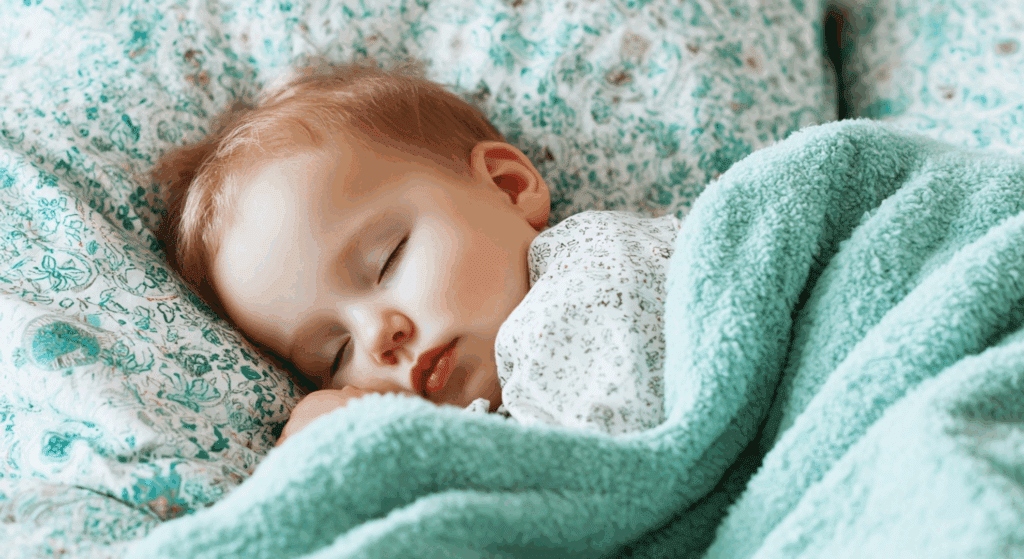
Many parents ask, “when can babies have blankets and pillows?” It’s a good question, and the answer depends on your baby’s age and sleep habits.
Blankets are usually safe to use after your baby turns 12 months old, but some parents wait until around 18 months, especially if their baby moves around a lot in their sleep. At this age, babies are stronger and can push blankets away from their face if needed.
Pillows, on the other hand, should wait even longer. Experts say pillows are not safe for babies under 18 months. The safest time to introduce a pillow is usually around 18 to 24 months, once your toddler is sleeping in a toddler bed or shows signs of needing more neck support.
Do’s and Don’ts for Blankets and Pillows:
Do
- Use a light, breathable blanket
- Wait until baby is at least 12 months old for blankets
- Wait until 18–24 months for pillows
- Start during naps and watch closely
- Keep the crib clear of toys and extra bedding
Don’t
- Don’t use thick, heavy blankets
- Don’t give pillows to babies under 18 months
- Don’t use quilts or fuzzy materials
- Don’t rush, go at your baby’s pace
- Don’t add more than one item at a time
Knowing when to add blankets and pillows helps keep your baby safe and cozy as they grow. Always check for signs of readiness, and talk to your pediatrician if you’re unsure.
What Type of Blanket is Safest?
The best blankets for babies are ones that don’t trap heat and feel soft on the skin. Choose something that fits your child’s age, the season, and how they sleep.
Babies under 12 months should not use loose blankets, but for older babies and toddlers, the right fabric can help them sleep better without getting too hot or cold. Always skip thick or fuzzy materials that can bunch up or hold too much heat. Look for options that are easy to clean and stay in place.
| Fabric | Best Age | Machine Washable? | Weight |
|---|---|---|---|
| Cotton | 12+ months | Yes | Medium |
| Muslin | 12+ months | Yes | Light |
| Fleece | 18+ months | Yes | Heavy |
| Bamboo | 12+ months | Yes | Light–Medium |
Let safety and comfort guide your choice, not just how soft it feels.
Choosing Blankets: Common Mistakes to Avoid
Even with the best intentions, it’s easy to overlook a few safety steps when it comes to baby sleep. Here are some common mistakes parents make when introducing blankets or setting up the sleep space.
- Using blankets too early: Babies under 12 months shouldn’t have loose bedding in the crib.
- Choosing heavy or thick materials: These can trap too much heat and raise the risk of overheating.
- Adding stuffed animals or toys: These might seem comforting, but they can block airflow or roll onto the baby’s face.
- Not checking room temperature: A warm room plus a warm blanket can make sleep unsafe.
- Ignoring baby’s sleep stage: If your baby still wakes often or moves a lot, a blanket might not stay in place safely.
- Skipping nap tests: It’s safer to test new blankets during naps first, when you can watch closely.
- Not trusting your gut: If something doesn’t feel right, it’s okay to wait longer.
Keeping these things in mind can help you build a safer, calmer sleep space for your baby as they grow.
Conclusion
I’ve come to see that understanding when babies can sleep with a blanket isn’t about picking a set age; it’s about knowing the signs, the risks, and what helps babies sleep safely.
Writing this helped me pull together the most useful advice from experts and real parents in a way that actually makes sense.
Now it’s your turn to use what you’ve learned. Think about where your baby is in their sleep habits, and trust your instincts. You don’t have to guess anymore, you’ve got the facts.
Just remember: safety comes first, and there’s no need to rush. If you’re ready to learn more, there’s plenty of helpful info waiting. Go ahead and check out the rest of the baby sleep blogs to keep building your confidence!


